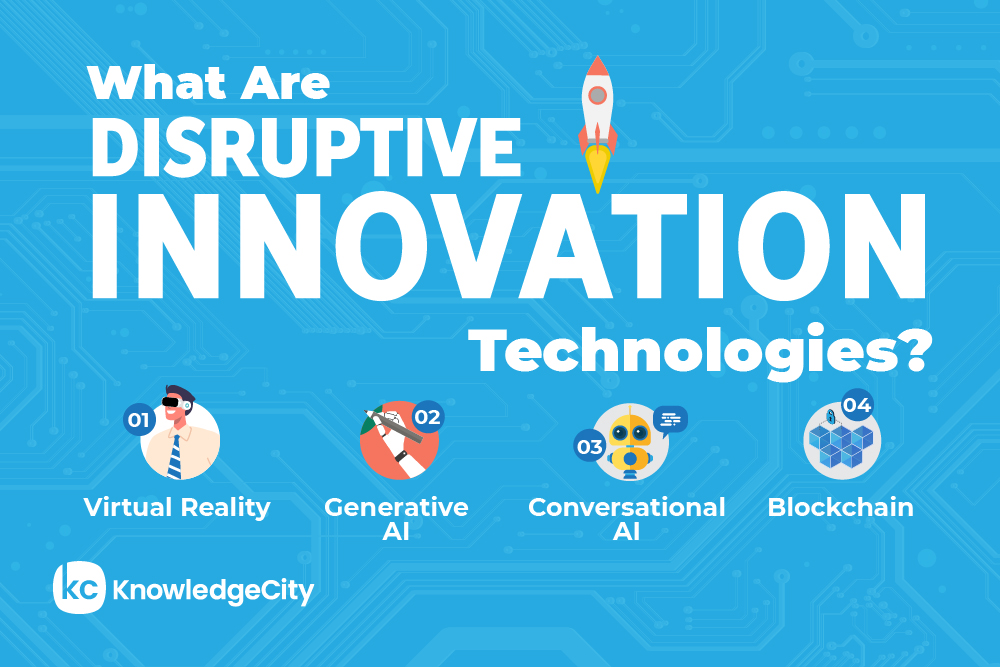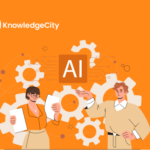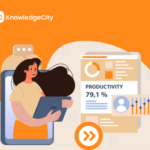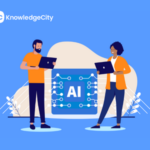Disruptive technology in HR is nothing new. Social media, employee engagement platforms, applicant tracking systems, data analytics, cloud computing, and mobile technology have all changed the way human resources management functions.

The influence of these technologies is undeniable, but the disruptive human resource technology currently gaining momentum will make an even larger impact.
There is some concern that disruptive technology in HR will eliminate many HRM roles and tasks. While there are some disadvantages to these technologies, the benefits far outweigh them. It is necessary to keep up to date on disruptive tech and its application in human resources if you want to find a place in the new HRM structure.
What Is Disruptive Technology?
Disruptive technologies are those tools and apps that completely change the way an organization or unit functions. In the case of disruptive technology in HR, these tools and apps change the way talent is sourced, hired, trained, and managed. For example, social media disrupted human resources management by forcing organizations to be more transparent about salaries. It also provided another source of talent.
Applicant tracking systems are the best and most recent examples of disruptive technologies. Human resource management now completely relies on ATS to sift through a myriad of resumes in record time. There was initial concern that this technology would completely automate the recruitment process, eliminating the need for organizations to staff as many recruiters.
This was not the case. Instead, ATS freed up the time of recruiters to focus on more important aspects of sourcing talent such as developing more effective onboarding systems and processes. This has increased the retention rate of new hires in many organizations.
With the introduction of AI into every aspect of business, the future is bright and uncertain. Still, there are some indicators of how disruptive tech can enhance human resources going forward.
Recent Examples of Disruptive Tech in Human Resources Management
Disruptive technologies in HR are constantly evolving, and artificial intelligence is playing a big role. However, AI isn’t the only player on the field. The five most recent examples of disruptive technologies that can enhance human resources today are:
- Conversational AI: Artificial intelligence designed to carry a conversation, such as ChatGBT.
- Generative AI: Artificial intelligence that can generate content.
- Skills Tech: Technologies that build skills within human resources and the organization as a whole.
- Virtual Reality: In particular, VR wearables are coming onto the scene.
- Blockchain: Technology that uses decentralization to improve data quality, retention, and security.
These disruptive technologies can be used to enhance many aspects of human resources management, from sourcing talent to rewarding employees. Next, we’ll discuss how each of these technologies can be applied to human resource management.
How to Enhance HR With Disruptive Technologies
Disruptive technologies can be implemented in every aspect and stage of human resource management. Generative and conversational AI, like ChatGBT, has the most applications and implications for HRM in the future.
Let’s look at how this and other disruptive tech can enhance recruiting, onboarding, training, benefits management, performance management, and compliance.
Recruiting
The biggest attraction of these disruptive technologies is that they reduce repetitive tasks, freeing up time for more important aspects of human resource management. Perhaps no area of HRM offers these benefits better than disruptive tech in recruiting. According to expert Tarryn van Niekerk, conversational AI like ChatGBT does this well by automating the scheduling of interviews and gathering basic information from candidates.
However, ChatGBT has other uses in recruiting. It can also be used as generative AI to create job ads based on formal job descriptions and generate other content to attract top talent. ChatGBT can also answer candidate questions before or after the interview process has begun.
Virtual reality also has a role to play in the future of recruiting. According to Paul Bergeron of SHRM, virtual reality is already being used at hiring fairs by MGM Resorts. VR headsets are given to potential candidates so that they can see firsthand what it is like to work for the company in that role. Virtual reality wearables can also be used for that purpose as part of the interview process.
Onboarding
ChatGBT has similar implications in onboarding. Conversational and generative AI can automate repetitive onboarding tasks, answer new employee questions, and ensure accuracy. Generative AI can also create basic policies such as drug testing policies and codes of conduct. Virtual reality can be used in onboarding for a more interactive and engaging model for onboarding training.
However, perhaps the most impactful disruptive tech in onboarding is blockchain technology. Blockchain technology decentralizes information so that security and accuracy are preserved. According to HR Future, blockchain improves data security because data is immutable. This is important in onboarding when personal data is collected.
Training
Generation Z and Millennials prefer self-led training, and today’s disruptive technology makes this possible. ChatGBT can be used to develop self-led training modules and AI study buddies for certifications or important processes. It can also be used to develop training materials based on desired outcomes.
Tim Sackett of SHRM wrote that skills tech refers to a variety of tools that gather and develop the skills of the HR workforce. Skills tech can be used for mobility programs, organizational skill assessments, and other forms of training both within HR departments and throughout the organization.
Virtual reality could be considered part of skills tech, but it stands apart with its wide applications. Bergeron points out that Deloitte estimates that 70% of employee training will be handled by virtual reality by 2025.
Benefits Management
Managing benefits is a large part of human resource management, and it can take up a lot of time for human resource staff. Many of these tasks can be automated with ChatGBT. Much of benefits management is answering questions that can easily be handled with conversational AI. It also requires disseminating information to employees about their benefit options, and this content can be created with generative AI.
Blockchain technology is particularly important in benefits management. This technology increases security and minimizes data breaches, as well as ensuring that only authorized staff can access employee benefit information.
Performance Management
All of these technologies have a place in performance management. ChatGBT can be used to answer employee questions about performance metrics and evaluations. It can also inform managers on how to evaluate employees by pulling from relevant data. Skills tech can be used to empower employees to improve their own performance based on feedback, and virtual reality can be used to coach employees for improvement.
Blockchain technology also has a place in performance management. In blockchain tech, the data is confirmed in multiple locations so that it cannot be easily changed or accessed. This creates a level playing field for employees and ensures objective performance raises and bonuses.
Compliance
Compliance is paramount in human resources management, and disruptive technologies are a great way to support these efforts. Conversational AI, like ChatGBT, streamlines HR processes and information to ensure accuracy and compliance. This eliminates issues that can arise from inexperienced or inaccurate HR professionals.
Blockchain technology is important in HR compliance. Blockchain tech has long been used in the healthcare industry to protect, validate, and collect information. This technology can now be integrated with mobile technology and ChatGBT to make HR self-service accurate and compliant with all regulations.
Why Should You Utilize Disruptive Technologies?
There are many reasons to use disruptive technologies in human resources. Like social media, ATS, and data analytics have become standard in today’s HRM processes, so will the disruptive technologies discussed here. There are five primary benefits of implementing disruptive technology for HR sooner rather than later.
Streamlining Processes
It is easy to see how ChatGBT and blockchain technology can streamline processes. These tools ensure accuracy and consistency, which is important in human resource management. A big part of streamlining processes is automating tasks, which has its own benefits.
Niekerk points out that when tasks like recruiting, onboarding, and benefits are automated with options for employee self-service, it frees up time for more important human resource strategies. Human resource managers will be able to spend their time developing employee engagement programs, analyzing HR data to identify trends, finding areas for improvement, and developing strategies to attract and retain top talent.
Enhancing the Employee Experience
Generation Z and Millennials make up about half of the workforce, and they are accustomed to instant gratification. Disruptive technologies in HR give them this satisfaction through self-service options and chatbots that give instant answers at any time of the day or night.
This flexibility to handle one’s own human resource matters enhances the employee experience and helps retain employees. Virtual reality enhances employee engagement and gives them a “cool experience” that gives them an overall favorable impression of the organization. Skills tech also gives Gen Z and Millennials the ability to self-teach valuable skills, which is important to these generations.
Improving Communications
ChatGBT is great for improving communications. Misinformation tends to run rampant in human resources, and the effects can be devastating, affecting compliance, employee benefits, and more. ChatGBT eliminates misinformation by providing employees with accurate and consistent answers to their questions based on human resource policy.
Data Security and Accuracy
Human resource professionals have long argued that data is more accurate when employees enter it themselves. Employee engagement and integrated human resource platforms have come a long way toward meeting that need. Blockchain technology takes this even further by adding more protection for data and making it difficult to edit.
ChatGBT can be used to gather information from employees in onboarding and other processes. It can also help ensure the accuracy of information being collected by comparing it to data on file. AI is also adept at identifying missing information and ensuring that self-service is as accurate as working with an HR professional, if not more so.
Attract Top Talent
The primary goal of any human resource department is to attract and retain top talent for the organization’s success. Disruptive technology in HR furthers this goal by attracting top talent. Generation Z will make up a quarter of the workforce by 2025, and Gen Z and Gen Y already make up just over half of the traditional workforce.
These generations are highly immersed in the digital world, and they expect companies to integrate the latest technology into their processes. According to survey data, 91% of employers responding said they need to up their game on technology in the workplace to continue to attract and retain the top talent of these generations.
Disruptive technologies enhance human resources in numerous ways and will continue to do so. One thing is for certain: if you want to attract, engage, and retain the top talent in your industry, implementing disruptive technologies for HR is the answer.
Implementing these disruptive technologies is not as expensive as you might think. For example, a virtual reality headset can cost about $300. Meanwhile, the costs of not implementing this technology are clear: the best employees will go elsewhere.
Ultimately, disruptive technologies are here to stay and will only continue to evolve and adapt to the needs of the younger generations. If your organization doesn’t come on board with disruptive tech for HR now, you will be behind the curve later.
ChatGBT is the easiest way to dip your toe in the water, with inexpensive and easy implementation. Start there, then examine your human resource strategies to find ways to implement other disruptive technologies.
Subscribe to Our Newsletter
Join 80,000+ Fellow HR Professionals. Get expert recruiting and training tips straight
to your inbox, and become a better HR manager.

 KnowledgeCity
KnowledgeCity 













